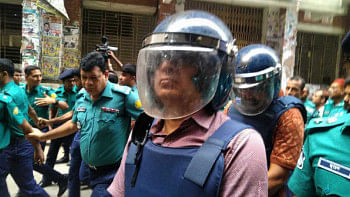Magical Realism in Women's Literature
'Magical Realism' acquired new directions in Cuban writer, Alejo Carpentier's, ''real maravilloso', making it intimately connected with places where the technique was practiced with local myths and folklore. A further derivation of this approach to Magical Realism from Angel Flores' description of magic realism as 'an amalgamation of realism and fantasy ' led to 'a rather indiscriminate use of the term for two very different offshoots from the same stem: an intellectual one derived from Borges and the surreal one of Marquez. A closer approach to the spirit of the marvelous, accommodates the supernatural, relies heavily on superstitious faith and has its source in popular folklore.
In the light of these descriptions of Magical Realism, the trend in most 'ethnic' and 'migrant' literature present bizarre situations as acts of fate or the unknown. This technique depicts the existence of ethnic beliefs as a protective mantle over unfamiliar and daunting experiences resulting from change and the constraints of alien societies and relationships.
Many female writers adapted this technique to explain such situations as off shoots of ethnic beliefs, traditional folklore, and superstition. This trend is often found in the work of both non-European writers depicting controversial lives.
Kate Chopin's use of Magical Realism in the story, An Egyptian Cigarette, depicts the protagonist as one who smokes an Egyptian cigarette, goes into a stupor and enters the 'body of an Egyptian woman who had rejected her gods because of her lover and is then rejected by her own lover. This incident is explained as the consequence of rejecting one's traditions and how experimenting with such magical experiences lead to similar 'experiences'. Chopin's knowledge of local folklore, superstition and supernatural beliefs of the bayou and creole cultures, influence Magical Realism in her 'real life' stories.
Ana Costillo's novella, So Far From God, depicts migrant communities in America where patriarchal structures dominate and older people retain their faith in beliefs and customs of their native land; but the younger generation strive to go beyond the biases of traditional lifestyle to adapt to the new society in an attempt to get rid of the label of migrants. Whatever goes wrong at this juncture is justified as 'metamorphosis' that occurs as a result of the 'unreal experiences' unexplained by universal laws or logic. The emphasis is on the influence of age-old beliefs to explain tragedies of life which could well be realistic but 'magical' with reference to the frightening nature of the occurrence itself.
Magical Realism reflects transgressing boundaries and multiple worlds as a means to change. However, the so called extraordinary incidents in perfectly 'ordinary' lives of the ethnic community of migrants are used in the story to facilitate the characters' transition to another kind of life – to escape the realities or tragedies they encounter. Two female protagonists of So Far From God make the transition after suffering debilitating attacks as a means to escape from their real world.
Toni Morrison in her work, Beloved, makes use of Magical Realism to define a society of social opposites. She borrows from the oral traditions of African folklore to write about supernatural themes that continue to dominate the African-American community. Sethe, a young slave, murders her baby girl in order to save her daughter from a life of slavery. Her grief manifests itself to the body of a young girl. The 'magical' element used here exemplifies contrasting political views that create real life tensions between the colonized and the colonizer, slave and master.
Arab feminist writers and poets like Elmaz Abinader project the element of 'magical' in the traditions and images that magnify the reality of a 'hybrid' existence which is termed 'magical' for its mystique. The poetry magnifies the 'magic' of something 'exotic' in the realistic world of a migrant existence. Elmaz, a third-generation Lebanese-American, weaves the 'magic' mystique of her native land while based in the mechanized world of middle-class America.
Asian feminist writing carry elements of the Magical to not only identify the Magic in its traditions but the realistic lifestyle of a Bengali, a Punjabi or a Gujarati in the western atmosphere of an European society, in the sights, smells and décor of a realistic 'brick lane' or any ethnic area of some multicultural corner of the world.
Raina Moinuddin Abu Zafar freelances as an English lecturer at NSU and IUB. However, her 'first love' is writing.

 For all latest news, follow The Daily Star's Google News channel.
For all latest news, follow The Daily Star's Google News channel. 



Comments